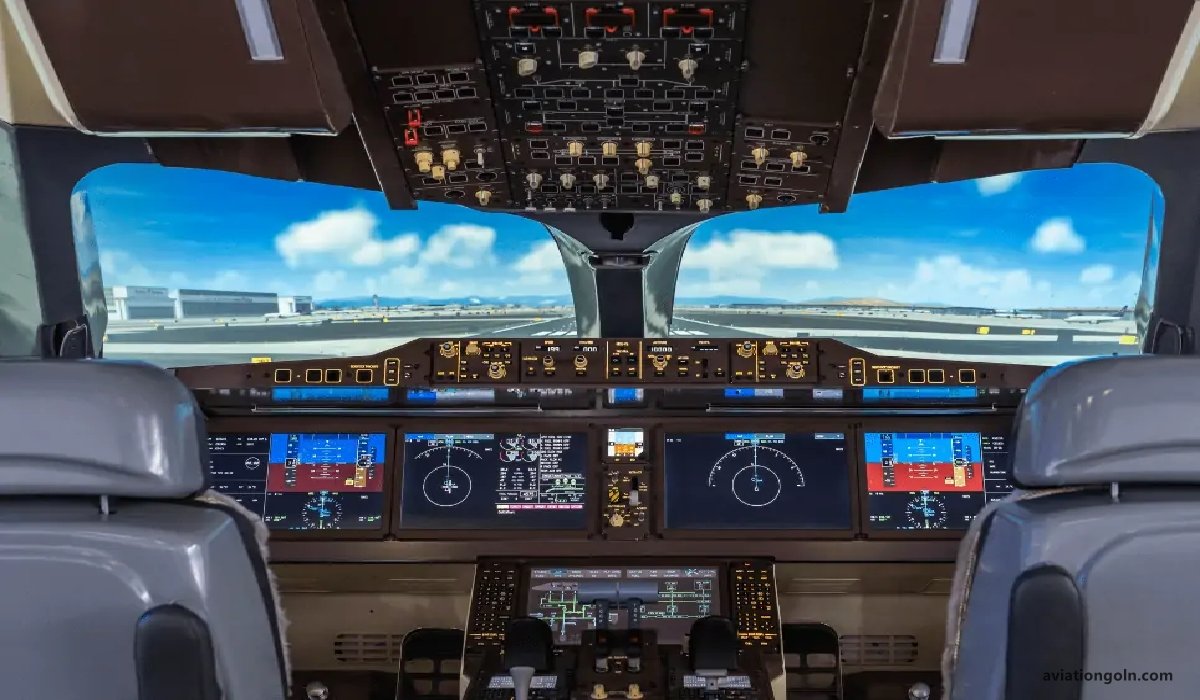Navigation and Communication Systems in Aircraft Systems and Avionics: The realm of aviation relies heavily on precision, safety, and timely decision-making. At the heart of this intricate dance in the skies lie the aircraft’s navigation and communication systems. These systems serve as the eyes, ears, and voice of an aircraft, ensuring safe and efficient operations in increasingly congested airspaces. In this comprehensive exploration, we’ll delve deep into the intricacies of these systems and their pivotal role in modern aviation.
Navigation and Communication Systems in Aircraft Systems and Avionics
1. Introduction to Avionics
“Avionics” is a portmanteau of “aviation” and “electronics,” representing the electronic systems used in aircraft, satellites, and spacecraft. These systems encompass communications, navigation, the display and management of multiple systems, and the hundreds of systems that are fitted to aircraft to perform individual functions.

2. Navigation Systems
Navigation systems guide aircraft from one point to another, ensuring that they remain on course and avoid obstacles.
2.1. VOR (VHF Omnidirectional Range)
- Function: Provides aircraft with real-time directional information.
- Working: A ground station emits a VHF radio pulse. The time difference between this pulse and the received signal helps pilots determine their bearing concerning the station.
2.2. INS (Inertial Navigation System)
- Function: An autonomous system that tracks the position, orientation, and velocity (speed and direction) of an aircraft without external references.
- Working: Uses motion sensors and rotation sensors to calculate the position, orientation, and velocity of a moving object.
2.3. GPS (Global Positioning System)
- Function: Determines an aircraft’s exact location using satellites.
- Working: Receivers triangulate signals from multiple satellites to determine the aircraft’s position with exceptional accuracy.
2.4. ADF (Automatic Direction Finder)
- Function: An older system used to find the bearing from the aircraft to a radio source.
- Working: Uses a ground-based beacon known as a Non-Directional Beacon (NDB).

3. Communication Systems
Communication systems in aircraft facilitate interactions between the aircraft and the ground as well as other aircraft.
3.1. VHF (Very High Frequency) Radio Communication
- Function: Provides voice communication with ground control and other aircraft.
- Coverage: Generally, VHF radios operate on line-of-sight, limiting them mainly to terrestrial communication.
3.2. HF (High Frequency) Radio Communication
- Function: Allows aircraft to communicate over long distances, especially transoceanic routes.
- Advantage: Unlike VHF, HF radio waves can be refracted off the ionosphere, allowing for long-range communication.

3.3. SATCOM (Satellite Communication)
- Function: Enables aircraft to communicate using satellites, especially in areas where VHF and HF are not viable.
- Benefits: Global coverage, high data transfer rates, and increased capacity.
3.4. ACARS (Aircraft Communications Addressing and Reporting System)
- Function: A digital datalink system for the transmission of short messages between aircraft and ground stations.
- Use Cases: Transmitting aircraft status reports, weather updates, flight plans, and more.

4. Collision Avoidance and Surveillance Systems
4.1. TCAS (Traffic Collision Avoidance System)
- Function: Monitors the airspace around an aircraft for other aircraft equipped with a corresponding active transponder.
- Working: It issues pilots with visual and audio instructions to avoid a possible collision.
4.2. ADS-B (Automatic Dependent Surveillance-Broadcast)
- Function: An advanced system that determines an aircraft’s location via satellite navigation and broadcasts it, enabling it to be tracked.
- Advantages: Enhanced situational awareness, more precise surveillance, and improved safety.

5. Integrated Systems and The Glass Cockpit
Modern aircraft, especially in commercial aviation, leverage integrated avionic systems. These “glass cockpits” replace traditional dials and gauges with LCD screens. They offer:
- Centralized Control: A more intuitive interface for pilots.
- Reduced Workload: Automation of various functions eases the pilots’ workload.
- Enhanced Safety: Real-time data analytics can warn pilots of potential issues before they become critical.

6. The Future of Navigation and Communication
As technology advances, we’re witnessing the emergence of:
- AI-Powered Systems: Algorithms that can make real-time decisions, aiding pilots.
- Quantum Navigation: Systems that don’t rely on external signals, ensuring they can’t be jammed or spoofed.
- Advanced Satellite Systems: The deployment of mega-constellations like Starlink could revolutionize airborne communication.

Navigation and communication systems are the backbone of aviation safety and efficiency. As our skies become busier, and as our technological capabilities expand, the evolution of these systems becomes paramount. Through continued innovation, collaboration, and a commitment to excellence, the aviation industry ensures that every journey — whether a short hop or a transcontinental adventure — is carried out with the utmost precision and care. From the early days of flight navigation using the stars, we have journeyed to a point where planes virtually talk to each other to ensure safe passage. It’s a testament to human ingenuity and the relentless pursuit of progress.
Read more:
